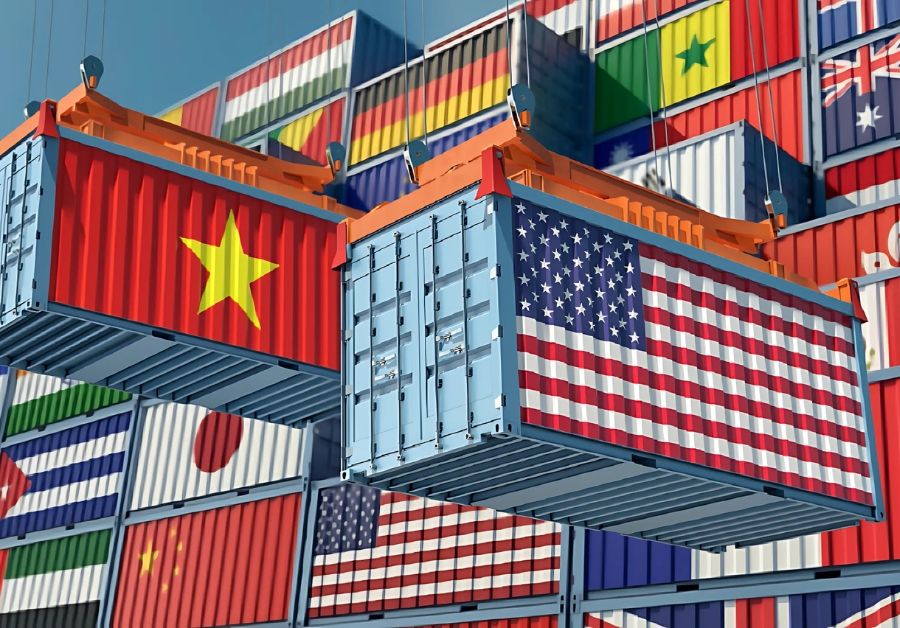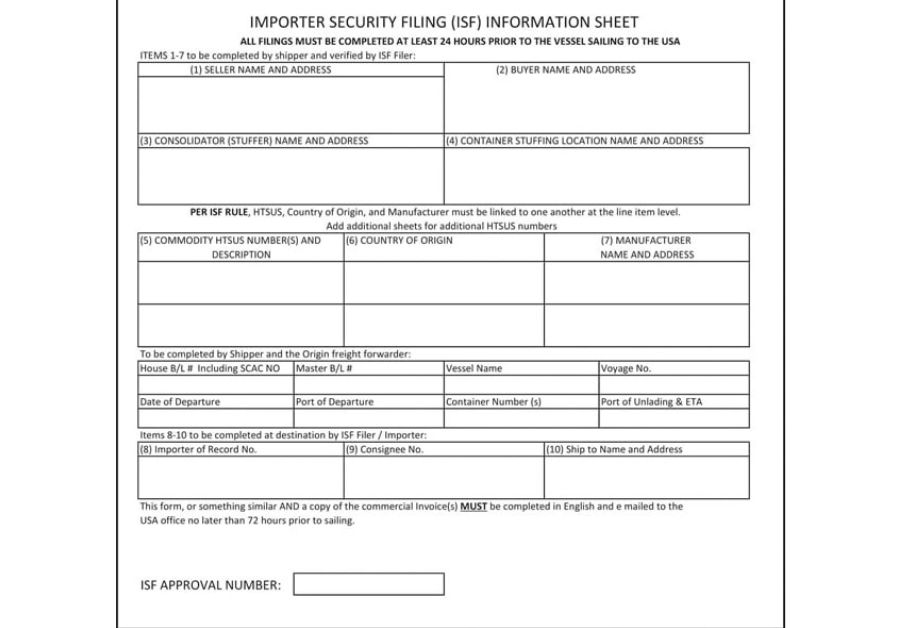What is ISF (Importer Security Filing)? How to File Correctly

What is ISF (Importer Security Filing)?
ISF (Importer Security Filing), also known as ISF 10+2, is a mandatory security declaration for all ocean freight shipments imported into the U.S. This regulation, enforced by U.S. Customs and Border Protection (CBP), requires importers or their agents to submit the filing at least 24 hours before cargo is loaded at the export port.
Implemented in 2009, ISF aims to enhance national security, mitigate risks, and prevent threats related to imported goods. Failure to comply may result in fines up to $5,000 per shipment, cargo holds, or delayed clearance.
Note: ISF applies only to ocean freight entering the U.S., not air, land, or bulk cargo.

Required Information for ISF Filing
ISF is called "10+2" because it requires importers to submit 10 data elements about the shipment, plus 2 additional pieces from the carrier.
10 Importer/Supplier Data Elements:
Manufacturer/Supplier name and address
Seller name and address
Buyer name and address
Ship-to party name and address
Container stuffing location
Consolidator name and address
Importer of Record (IOR) number
Consignee number
Country of origin
HTSUS code (Harmonized Tariff Schedule of the U.S.) for each item
2 Carrier Data Elements:
Vessel stow plan
Container status messages
Additional Requirements:
Link ISF to AMS (Automated Manifest System) using the MBL/HBL number and carrier SCAC code.
Key Notes:
Data must be accurate, updated promptly, and submitted via CBP’s system ≥24 hours before vessel departure.
Container stuffing location and consolidator details can be updated later but no later than 24 hours before U.S. arrival.
Who is Responsible for ISF Filing?
The Importer of Record (IOR) in the U.S. is legally responsible. However, they may authorize a customs broker, forwarder, or logistics provider to file on their behalf via a Power of Attorney (POA).
In Vietnam, exporters typically coordinate closely with U.S. importers or logistics partners to ensure timely ISF submission, avoiding penalties or cargo holds.

Standard ISF Filing Process:
Gather data: Collect all 10+2 elements from relevant parties.
Access CBP’s system: File via ACE (Automated Commercial Environment) or logistics software.
Complete the form: Enter all details accurately in the ISF template.
Review & submit: Double-check and submit ≥24 hours before vessel departure.
Monitor updates: Track ISF status, amend if needed, and retain records for verification.
Warnings:
Errors or delays may trigger $5,000 fines/shipment and delay clearance.
Standard ISF Declaration Form

Tân Thanh Container – Vietnam’s leading international-standard container supplier for import/export. We provide high-quality containers, competitive pricing, professional service, and long-term warranties to optimize your logistics. CONTACT US NOW via Zalo or hotline 0968 039 939 for expert advice!
>> Read more: Key Considerations for Container Shipping
Address: No. 14, Street 15, Block 4, Linh Trung Ward, Thu Duc City, Ho Chi Minh City
Phone: 0968 039 939
Email: info@tanthanhcontainer.com
Website: https://tanthanhcontainer.com/







